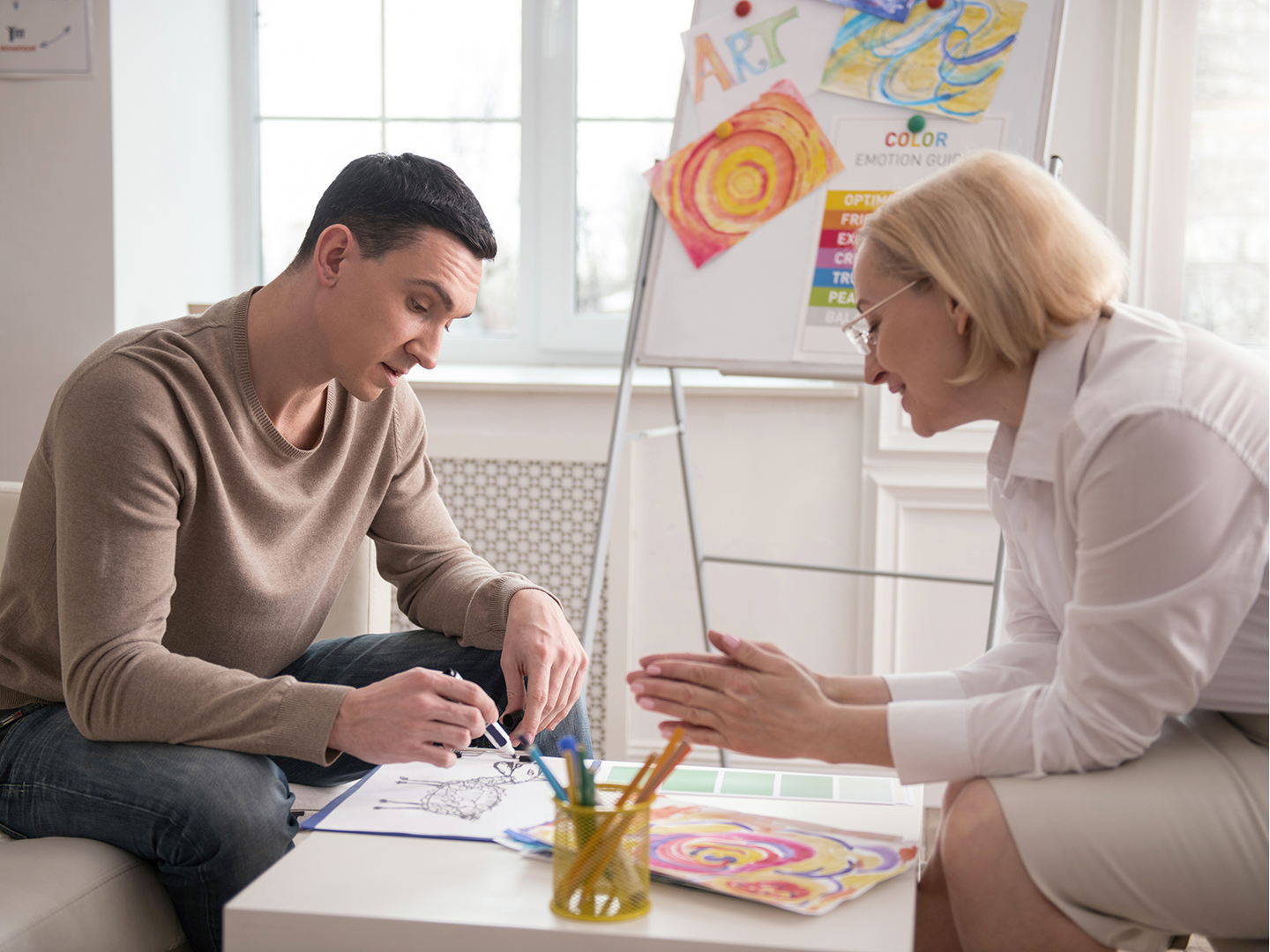For many who have sought an outlet for personal expression amid life’s challenges, art has proven therapeutic. It’s no wonder, as studies have shown that creating expressive art can help people grieve, heal trauma, create connection and manage anxiety and depression. May is Mental Health Awareness Month, which is a great time to learn why art therapy is a great way to cultivate good mental health.
Many techniques for addressing and supporting mental and behavioral health are rooted in taking the intangible — emotions and feelings — and making them tangible through journaling, creative writing or art. Dr. Brittany Harker Martin, founder of Brain Smoothies and a professor at the University of Calgary, says, “Practicing the arts can be used to build capacity for managing one’s mental and emotional well-being.”
Art therapy helps people facilitate mindfulness, connect with their emotions and challenge their mind — all of which deliver emotional and neurological benefits.
For example, for individuals with post-traumatic stress disorder (PTSD), visual arts such as painting, drawing or sculpting help them to depict traumatic experiences and then view the finished image at a physical distance. This helps them externalize memories in an emotionally safe way, according to the IAM Lab at Johns Hopkins University.
Researchers at the IAM Lab also found that creative activities can help people manage grief. Art therapy helps regulate the highs and lows of grief by bringing feelings that are repressed or difficult to express out in the open, making them more accessible for processing.
While there are multiple media for artistic expression, paper and other forest products often provide the base for sensory-based activities, such as drawing and painting, that can help all ages improve their mental health and heal from trauma.
Art Therapy vs. Art as Therapy
Though the term “art therapy” is used loosely today, it is different from using art as therapy. While art as therapy is more recreational, clinically based art therapy is integrated with other psychotherapy activities to encourage mental and emotional healing.
Art therapy engages the mind, body and spirit more than talking alone. Visual and symbolic expression can enable transformation, according to the American Art Therapy Association. Whether you seek out a professional art therapist or choose to pursue some form as art as therapy, putting pencil to paper or paint to the canvas can help rewire nerve connections, rewrite narratives and process emotion, improving your mental health.
“Communication is not exclusively language-based nor is it the only form of healing and transformation,” says Cathy Malchiodi, author of “Trauma and Expressive Arts Therapy: Brain, Body and Imagination in the Healing Process.” “For those of us engaging individuals, groups and communities in the interoceptive and exteroceptive moments central to expressive communication, we already know this — that implicit, sensory-based experiences really are at the core of all repair, recovery and restoration.”
Now, where is that paper and pencil?
Additional Resources
- Find a therapist near you
- 7 Ways to Draw Your Stress Out via Psych Central
- Stories about Art Therapy via arttherapy.org
NOTE: The information provided on this site and in the resources linked within is for informational and educational purposes only and does not substitute for professional medical or mental health advice. Please consult a medical professional, healthcare provider or mental health clinician if you are seeking medical advice, diagnoses or treatment.
Domtar is not liable for any risks or issues associated with using or acting upon the information provided in this article.
